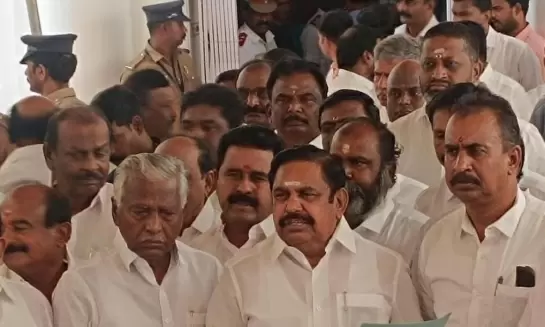Precision agriculture may bring next green revolution
15-October-2013
A small sugarcane farmer in western Maharashtra, Bhau Kadam (name changed) and his family, own about three hectares of land. He has two sons who are both graduates and work in Pune. When I asked him why he did not make his sons farmers, he says that farming is hard work, is non-remunerative and it is difficult to get labour.
Besides he also thinks that farming is not glamorous, a farmer's son is a non-marriageable commodity and that his sons have a better life in Pune. Kadam is getting on with age and is thinking of selling his land to the highest bidder and moving out of farming and even going and staying with his sons in Pune.
Village after village and state after state, this is the story of most farmers in India. They want to sell their land and move out of farming. Indian agriculture is in crisis. No matter how advanced or rich we become, all of us have to eat food. We cannot eat software or nuts and bolts.
I feel wealth and security of the country comes from its land and hence what is needed is sustainable, high-tech and high productivity agriculture which will be remunerative and help provide both food and energy security. Precision agriculture, which can provide precise inputs like water, fertiliser, insecticides at the right time to crops, can help bring in the next green revolution.
In the existing agricultural scenario, India is characterized by small farms with around 80 percent of total holdings less than 2 hectares (5 acres) and land mostly rainfed with only 30 percent irrigated.
Around 55 percent of the Indian population depends on farming, as against less than 4 percent in US and other advanced economies, because of heavy mechanisation of agriculture. Because of poor availability of funds, farm inputs, poor support price structure for the produce and almost no farm insurance, farming in India is non-remunerative and 50 percent of farmers are in debt - the main reason for a large number of suicides.
Also, without mechanisation, farming is hard and back-breaking work. This has resulted in most farmers' children quitting farming and going for other vocations. Farmers get more money in selling their land to builders, malls and factories. This has put more pressure on farm land, thereby requiring technologies to increase the productivity so that shrinking farm land can feed billion plus people of India in the future.
India, though one of the biggest producers of agricultural products, has very low farm productivity, with the average only 33 percent of the best farms world over. This needs to be increased so that farmers can get more remuneration from the same piece of land with less labour.
Precision agriculture (PA) may provide a way to do it.
Originating in US and European countries where farms are generally big (over 100 hectares), it sees extensive use of Global Positioning Satellite (GPS) for precise mapping of farms and - with appropriate software - informs the farmer about status of his crop and which part of the farm requires inputs like water, fertilizer and pesticide etc.
PA in western countries is also characterized by increased mechanisation with the use of heavy farm machinery (average power 100-200 kW) for all the farm and field operations such as sowing, harvesting, weeding, baling etc. The machinery runs on fossil fuels and uses about 63 percent of the total energy used in farming - a significant amount.
PA for small farms, on the other hand, can use small farm machinery and robots which may also be amenable to run on renewable fuels like bio oil, compressed biogas and electricity produced on farms by agricultural residues. The energy efficiency of the machinery and operations could also be improved.
For small farms, precision agriculture may include sub-surface drip irrigation for precise water and fertilizer application to the crops and robots for no-till sowing, weed removal, harvesting and other farming operations. Some of these robots are already being used on small farms in US and Europe and with vigorous R&D taking place, it is expected that they may be deployed in large scale in near future.
Similarly drones are being used quite regularly in Japan and US for insecticide application to the crops. Use of drones for agriculture is proverbial "turning swords into ploughs!" Most of these robotic machines and drones are small in size and hence are very suitable and excellent match for small farm applications. Thus small farms size of India is a blessing in disguise and ripe for large scale application of precision agriculture.
PA in US and other countries has shown tremendous increase in productivity, lowering of inputs and hence increased remuneration to the farmers. Besides it has helped improve the quality of land with no-till farming and less water usage. Similar things are possible in India with its use.
However, the biggest criticism of mechanised agriculture is that farm machinery is very costly and no farmer, including big ones, can afford it. Since precision agriculture is going to be very dependent on mechanization, this criticism is presently justified.
However I feel the mechanisation and PA may give rise in a big way to farm machinery leasing agencies in rural areas. These companies will lease the mechanised equipment, including drip irrigation systems, to the farmers and also provide trained manpower to run these machines.
Such a thing already exists on limited scale in India where few agencies do the wheat harvesting using combines and spraying of crops. They charge the farmers on per hour basis and with the unavailability of farm labour, farmers find this concept economical and attractive.
In western Maharashtra, more and more farmers are depending on mechanisation offered by such agencies. With increasing demand these leasing enterprises will increase and as PA develops and increases, they will get more structured, so that just like private taxi companies, they will be available on demand.
It is also envisaged that these leasing companies may form the backbone of Indian agriculture by providing the necessary advice and manpower to the farmers on precision agriculture.
Critics of mechanisation also contend that by timely sowing of crops and applying proper and recommended water and fertilizer to it, a farmer can easily improve the productivity of crops and his income. However application of inputs at proper time requires timely availability of labour, water and fertilizer - all of which are becoming scarcer and scarcer.
Besides majority of farms are rainfed and with the change of weather patterns, availability of rain water is very unpredictable. Hence the non-availability of inputs and labour on time is the biggest stumbling block to increase productivity of farms and remuneration. PA can help in this matter.
To my mind the ultimate role of a farmer should be to identify better crops, use that seed to propagate it further and hence in effect become a breeder of sorts. Progressive farmers already do that and with more time available to them because of PA they may be able to help Indian agriculture to produce better and higher yielding varieties.
Also the mechanisation will make the farming glamorous and may attract more people to take up farming in a big way. The most important component in taking PA forward will be in creating a huge resource of engineers, scientists and agriculturists to develop various components of the technology.
Without excellent manpower and consequently good R&D, PA will not succeed. One of the misfortunes of Indian education system is that all the good students want to get into engineering and medical streams and only the leftover students go into agriculture.
There is a need for excellent engineers from institutions like IITs, NITs, etc. to design machinery like robots and drones for PA. This can be facilitated by establishing a new branch of engineering called agricultural mechanotrics or robotics where faculty and students from almost all branches of engineering will interact and collaborate to develop smart systems for PA.
Another way forward is when scientists from ICAR institutes, engineers from academic world, industry and farmers work together in developing PA.
I also feel that PA may provide a platform for industrial corporate social responsibility (CSR) activity. After all helping the rural poor improve their livelihood through high tech farming should qualify as a CSR activity. The Indian government can facilitate in this process by giving soft loans and sops to the industry so that they get more engaged in agriculture and PA activities.
High tech PA therefore can help in bringing next green revolution to India and can produce tremendous rural wealth in a sustainable and environmentally sound way.
Farmers and farms are the backbone of any country since they can produce food, fuel (agricultural residues) and wealth from the land. They should be helped by all members of society and developing PA is a step in the right direction.
(Anil Rajvanshi is the director, Nimbkar Agricultural Research Institute (NARI) in Maharashtra. The views expressed are personal. He can be contacted at [email protected])
Digital Payments Surge in India: 18,120 Crore Transactions in FY24-25
Weather Dept Predicts Heavy Rains In Several TN Districts
Chitra Subramaniam’s Book Boforsgate Exposes Arms Trade, Corruption, and Political Intrigue
Israeli Tourist Gang-Rape Case: Third Accused Nabbed in Chennai
Indian Startup Founder Salaries Drop 25% Amid Funding Winter









